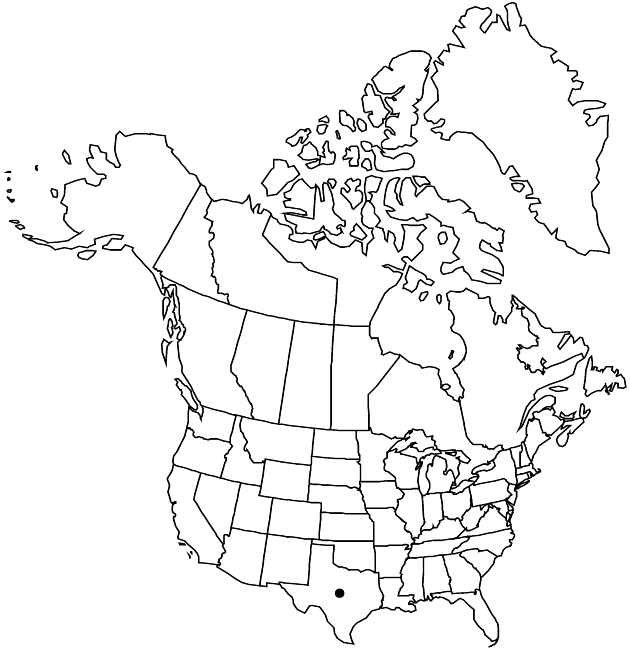Senecio quaylei
Sida 19: 286, figs. 1, 2. 2000.
Annuals, 80–120 cm (taproots surrounded by fibrous roots). Herbage glabrous or sparsely hairy. Stems single. Leaves evenly distributed; petiolate; blades ovate, 12–24 × 8–12 cm, bases tapered or contracted, margins wavy and dentate to denticulate (mid leaves sessile, ovate to broadly lanceolate, nearly as large as basal and proximal; distal sessile, lanceolate to linear-lanceolate, becoming bractlike). Heads 20–40+ in corymbiform arrays or cymiform clusters. Calyculi of 2–7 bractlets (1–3 mm). Phyllaries ± 13, 7–9 mm, tips green to grayish. Ray florets ± 8; corolla laminae 7–10 mm. Cypselae hirtellous.
Phenology: Flowering spring.
Habitat: Open, disturbed sites, especially roadsides
Elevation: 200–400 m
Discussion
Of conservation concern.
Senecio quaylei resembles S. ampullaceus; it is more robust and glabrous, and has prominently clasping mid-cauline leaves. The size and robustness suggest that it may be a polyploid derivative of S. ampullaceus.
Selected References
None.
